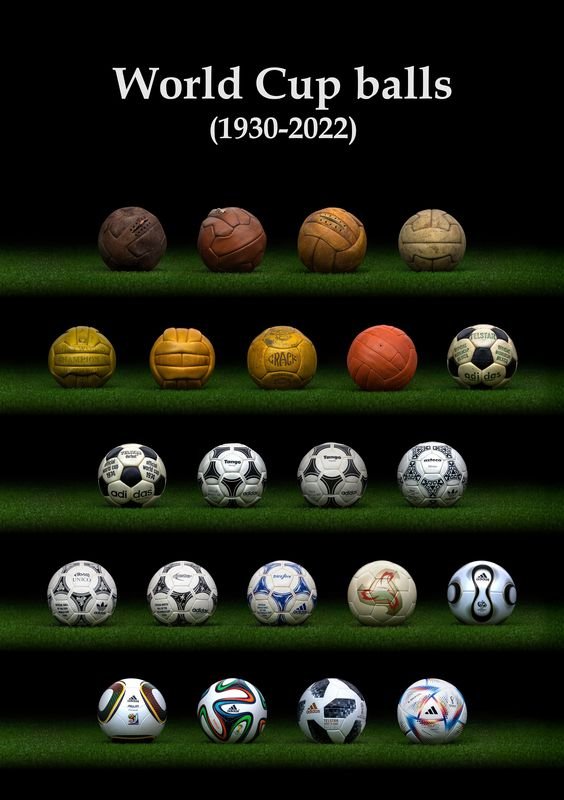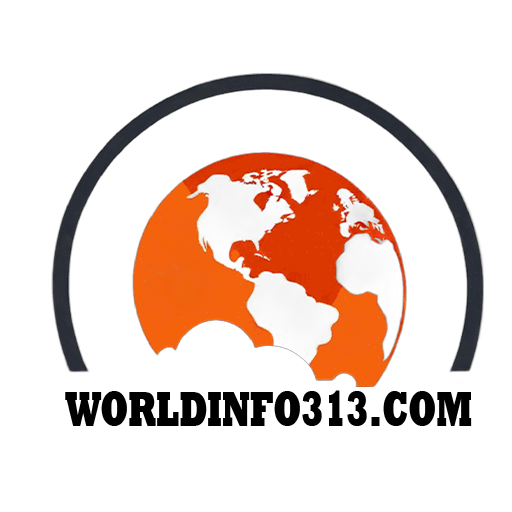History
In the early days, soccer balls were made of leather and were hand-sewn; they were never in a round shape and also required some techniques, such as filling the interior air bladder. The laces had to be undone because they were tied with thread, then the laces had to be removed.
As Peter Pesti stated, “Before each match, the team captain has to choose a ball, and each team has a perfect design for the ball.” Uruguay and Argentina were not agreed upon which ball they had to use for FIFA World Cup Balls HISTORY in 1930, so the first half of that match was played with Argentina’s selected ball and the second half was played with Uruguay’s selected ball.
Then laces were eliminated by valve design, and the new balls were better in shape and very easy to head. In both America and Europe world cup was broadcast through satellite in 1970 World Cup. At the 1970 World Cup, the creation of balls was also advanced. In older balls, there were vertical and horizontal stripes and they looked like volleyballs. The founder of Adidas (Adi Dassler) chose a 32-panel design that was more in-round; this design helped in all control and broke all the records. For the next three decades of the World Cup, this new creation established a standout, and since the 1970 World Cup, Adidas has provided balls for every tournament.
Size of the Ball and Manufacturing
There are 3,240 balls used in the whole tournament; 20 balls are used for each match and designed with match day, teams, date, and venue. When teams come for training in training camp, on that day, 20 training balls are also given to each team. Size of the ball that FIFA used is between 70 cm means 28 in ins and 68 cm means 27 ins. In the FIFA World Cup Balls HISTORY, Adidas balls are being used.
Before being provided, the ball has to go through some difficult tests, such as the ball’s weight, bounce, water absorption, roundness, and perimeter. Balls for the World Cup are being made in Pakistan; nearly 70 percent of the of the manufacturing of the World Cup ball is from Sialkot. Forward Sport is the multinational company of Pakistan in Sialkot that is manufacturing the soccer balls .FIFA World Cup Balls HISTORY It supplies its balls to a famous brand, which is Adidas, and this Adidas brand supplies these balls for the FIFA
World Cup
The latest balls are heat sealed with rare plates, and the design looked very smooth. Although these balls were designed to perform well, the maker of this design failed to achieve success, and in the 2010 FIFA World Cup Balls HISTORY, they were criticized at a high level, so many footballers criticized that the ball speed was unexpected and fast. So, Adidas argued that before this tournament, the ball had gone through difficult testing.
These balls are actually made up of polymers. Small molecules make these big polymer molecules, giving polyurethane different properties and a wide range of uses, such as skateboard wheels, adhesives, even the soles of our shoes, and foaming seats. Soccer ball has three main parts. If we talk about Brazuca, the first one is the outer covering. FIFA World Cup Balls HISTORY
This covering is made up of six polyurethane panels that are heated until they bond together. It protects the ball from absorbing water, while leather polyurethane makes the ball much lighter. The second one is lining; it has several layers. Polyamide is the main covering of this lining. You all have heard about nylon; it is a common example of polyamide
. It is being used in clothing, ropes, carpets, and bed sheets, and it is also being used in the making of balls in Brazuca because it improves the strength and balance of the ball. The third one is the bladder, which is made with butyl rubber. This rubber is used for World Cup balls because it grips the air for a long time. It also has a tiny valve used for inflating the ball.
Lists of Balls Used in the World Cup
- In the 1930 World Cup, the Tiento ball is used for the first half, and in the second half, the T-Model is used.
- In 1938, Fedrale 102 balls were used.
- In 1938, Allen was used. It was made with leather and had 13 panels, thin panels, and white cotton laces on a separate.
- In 1950, the Duplo-T ball was used, and that was the first ball that introduced syringe value and had no laces.
- In 1954, the first 18-panel ball used was the Swiss World Champion.
- In 1958, there were 102 candidates who chose this ball; it was a blind test by four FIFA officials, and that was Topstar.
- In 1962, Crack Ball was used.
- In 1966, the Challenge 4-Star Ball was used.
- In 1970, Telstar Ball was used.
- In 1974, Telstar Durlast used
- In 1978, Tango was used.
- In 1982, Tango Espana used
- In 1986, Azteca used
- In 1990, Etrusco Unico used
- In 1994, Questra was used.
- In 1998, Tricolore
- In 1999, icons were used.
- In 2002, Fevernova used
- In 2003, Teamgeist used
- In 2006, Teamgeist Berlin used
- In 2010, Jabulani used
- 2011 SpeedCell used
- In the 2014 Brazuca Final, Rio Ball was used.
- In the 2015 Conext 15 Final Vancouver Ball,
- In 2018, Telsar Mechta Ball used
- In 2019, Tricolor 19 is used
- In 2022, Al Rihla and Alhilm balls were used.
- In 2023, Oceaunz Final Pro will be used.

Conclusion
The balls that are being used in the FIFA World Cup Balls HISTORY are high in quality; there is no comparison between these balls, and Adidas is the renowned company that is providing these balls to FIFA, and that is the Pakistani company that is providing 70 percent of the of the balls to Adidas because the manufacturing of these Pakistani balls is high in standard, quality, and design, which meet the needs of FIFA. According to a FIFA spokeswoman, the tournament ball was used for souvenirs for the host cities, referees, teams, FIFA partners, and FIFA museums.
